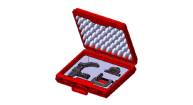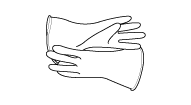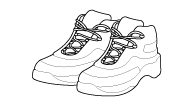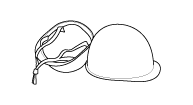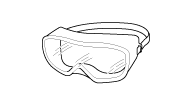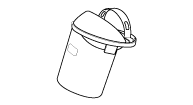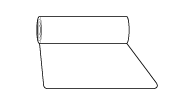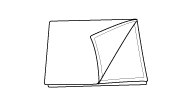Kia Optima Hybrid: Steering System / Special Service Tools
| Special Service Tools |
| Tool Name / Number | IIIustration | Description |
| Lower arm ball joint remover 0K545-A9100 |
| Removal of front lower arm from front axle |
| Personal Protective Equipment |
| Name | Illustration | Description |
| Insulation glove |
| Used when inspecting or working on the high voltage components [Insulation performance : 1000V / 300A or above] |
| Insulation shoes |
| Used when inspecting or working on the high voltage components |
| Insulation clothes |
| |
| Insulation helmet |
| |
| Safety glasses |
| Used in the case below • During Removal & installation or inspection of the high voltage battery terminals or wiring, which spark might happen. • During working on the high voltage battery pack assembly. |
| Face shield |
| |
| Insulation mat |
| Putting the removed high voltage components on the insulation mat to prevent safety accidents. |
| Insulation sheet |
| Covering
the high voltage components with insulation sheet to prevent people who
don’t wear the personal protective equipment from safety accidents. |
 Specifications
Specifications
Specifications ItemSpecificationTypeMotor Driven Power SteeringSteering gearTypeRack & PinionRack stroke148mm (5.82in)Steering angle(Max.)Inner40.05° ± 1.5°Outer32.95° Tightening Torques ItemTightening ...
 Troubleshooting
Troubleshooting
Troubleshooting SymptomProbable causeRemedyPlay in steeringLoose yoke plugRetightenLoose steering gear mounting boltsRetightenLoose or worn tie rod endRetighten or replace as necessarySteering wheel does ...
Other information:
Kia Optima Hybrid (TF HEV) 2016-2020 Service Manual: Components and Components Location
Component Location 1. Horn switch2. Horn relay (Engine room compartment)3. Horn (Low)4. Clock spring5. Horn (High) ...
Kia Optima Hybrid (TF HEV) 2016-2020 Service Manual: Special Service Tools
Personal Protective Equipment NameIllustrationDescriptionInsulation gloveUsed when inspecting or working on the high voltage components[Insulation performance : 1000V / 300A or above]Insulation shoesUsed when inspecting or working on the high voltage componentsInsulation clothesInsulation helmetSafety ...

